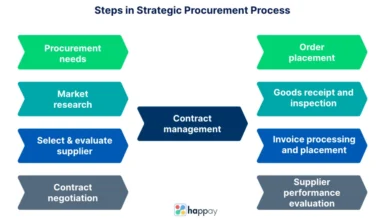5 Important Ground Control Items for Managing Landing Operations Efficiently

Picture: Unsplash
Efficient ground control is the backbone of smooth landing operations at any airport. Every aspect of ground control, from controlling aircraft movements on the tarmac to guaranteeing passenger comfort and safety, has to be carefully planned. This is especially important as global air traffic continues to increase. The proper combination of technology, skilled personnel, and strategic planning ensures that landing operations are not only efficient but also safe and dependable. Here are five essential ground control items that play a crucial role in managing landing operations effectively.
1. Advanced Ground Radar Systems
In order to keep an eye on and control aircraft movements on the tarmac and taxiways, ground radar systems are essential. These sophisticated systems provide real-time data on aircraft positions, giving ground controllers an accurate and up-to-date picture of all ground operations. The seamless movement of airplanes from landing to gate arrival depends on this real-time information to avoid collisions. Advanced ground radar systems feature high-resolution imaging capabilities and can operate in a variety of weather conditions, ensuring continuous service. These radars improve overall operational efficiency and safety by interacting with other airport systems, which makes them essential for contemporary ground control operations.
2. Efficient Aircraft Parking Management
For airport space and resources to be used as effectively as possible, aircraft parking management is crucial. Assigning gates and parking spaces in accordance with aircraft size, turnaround time, and maintenance requirements is part of proper parking management. In order to make educated judgments, sophisticated software tools analyze flight schedules, gate availability, and maintenance needs. Efficient parking management guarantees punctual departures, expedites the boarding and disembarking process, and lessens tarmac congestion. Better coordination with ground handling services like refueling, luggage handling, and aircraft lav cart services is also made possible by it. Effective parking management plays a crucial role in smooth landing operations, hence enhancing the overall efficiency of the airport.
3. Streamlined Baggage Handling Systems
The effective handling of baggage has a direct influence on passenger pleasure and operational efficiency, making it a crucial aspect of ground control. Conveyor belts, barcode scanners, and RFID tags are examples of automated technology used by simplified baggage handling systems to guarantee accurate and timely sorting, tracking, and delivery of luggage. These systems are intended to handle large amounts of baggage efficiently, lowering the likelihood of lost or delayed luggage. They provide real-time luggage status updates and are integrated with flight information systems so passengers can get alerts on time. Efficient baggage handling not only improves passenger satisfaction but also reduces airplane turnaround times, which helps landing operations go more smoothly.
4. Comprehensive Ground Support Equipment
Ground support equipment (GSE) encompasses a wide range of tools and vehicles necessary for servicing aircraft during landing and turnaround. This covers belt loaders, passenger staircases, tow tractors, and de-icing vehicles. Every piece of equipment has a distinct function in guaranteeing the prompt and effective servicing of airplanes. Tow tractors, for instance, are necessary for transporting airplanes to and from parking lots, while de-icing equipment guarantees that airplanes may fly safely in cold weather. To avoid malfunctions and delays, GSE upgrades and routine maintenance are essential. For smooth landing operations, ground control personnel need to be proficient in using and coordinating these equipment.
5. Robust Communication Systems
Effective communication is the linchpin of efficient ground control operations. Robust communication systems allow for seamless coordination among pilots, ground controllers, and various airport departments. These systems provide real-time information sharing via integrated digital platforms, data connection services, and radio transmission. Ensuring that all parties are informed of their obligations and any changes in operations is ensured via clear and concise communication. For example, ground controllers can quickly relay landing clearances, taxi instructions, and gate assignments to pilots, reducing the possibility of misunderstandings and delays. Furthermore, communication systems are essential for handling emergencies as they allow all parties involved to react swiftly and efficiently. Investing in cutting-edge communication systems improves landing operations’ overall effectiveness and safety.
Conclusion
In conclusion, managing landing operations efficiently requires a combination of advanced technology, strategic planning, and skilled personnel. Effective ground control requires powerful communication systems, complete ground support equipment, streamlined baggage handling systems, ground radar systems, and effective aircraft parking management. Every component is essential to guaranteeing the reliability, safety, and smoothness of landing operations. By focusing on these key areas, airports can enhance their operational efficiency and provide a better experience for passengers and airlines alike.



